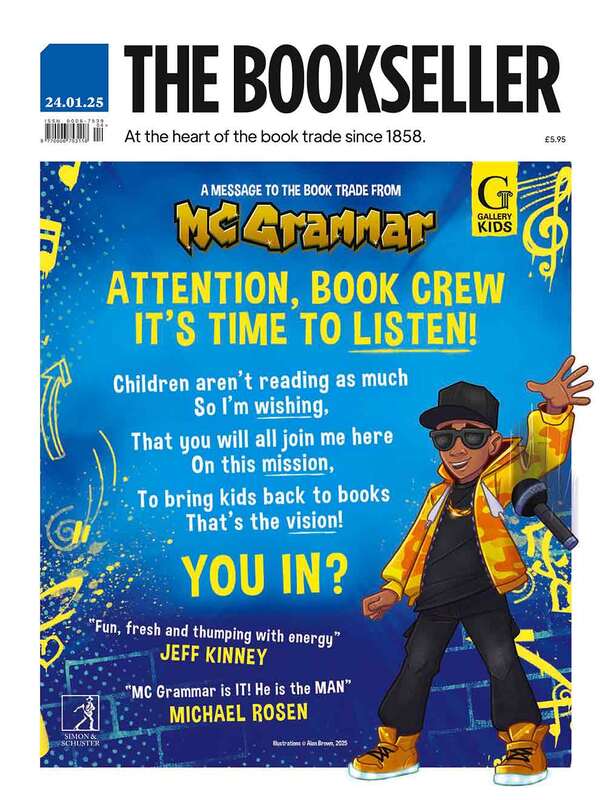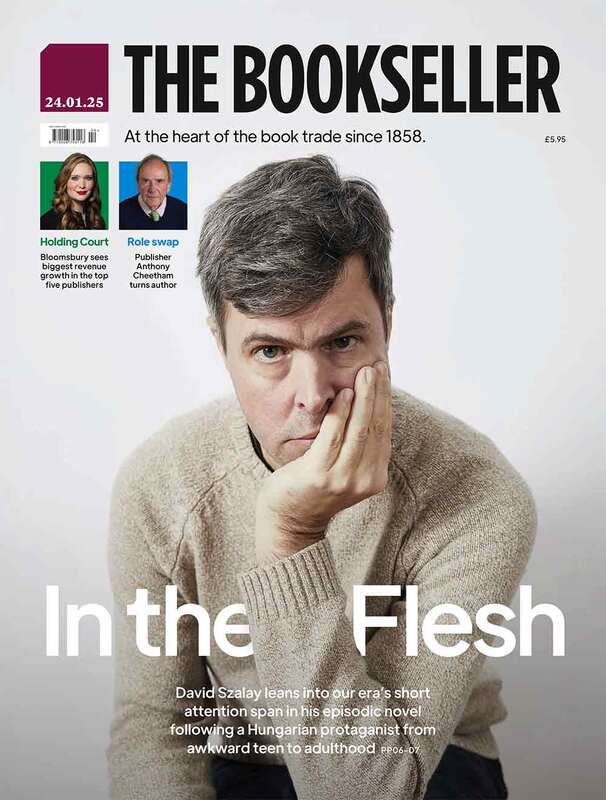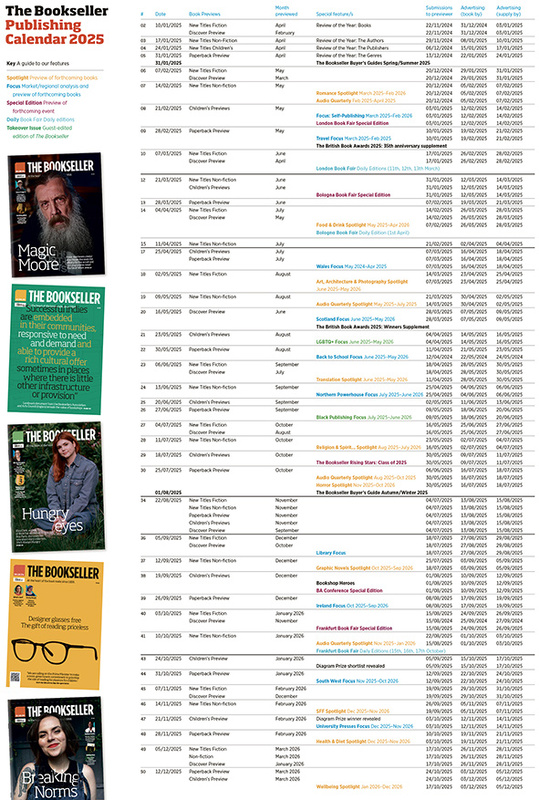You are viewing your 1 free article this month. Login to read more articles.
Trade debates shift towards shorter books for children
A notable shift towards shorter children’s books is being reported by publishers, agents and librarians, with many welcoming what they see as a challenge to the idea of length as “a marker of merit”, particularly in relation to middle-grade titles. The development is also seen as a way of getting reluctant readers “back into reading” following the pandemic and its impact on comprehension and enjoyment levels.
Discussions at the Bologna Children’s Book Fair around declining reading levels, exacerbated by the pandemic, were accompanied by discussions about book length, difficulty level, and what some see as “unrealistic expectations” around middle-grade titles. One attendee told the Bookseller that “there is a real feeling that books are too long and need to be shortened as attention spans and comprehension decline".
A session at the fair entitled How to Fight Low Reading Skills noted that “most professionals in the book industry will be aware of declining reading skills all over Europe”, as evidenced by the most recent findings from the Organisation for Economic Co-operation & Development Programme for International Student Assessment (PISA), released in December 2023.
In the UK, one survey of primary and early years teachers in schools in England by Kapow Primary, an online subject resource, saw 84% agree that children’s attention spans were “shorter than ever” post-Covid, while the 2023 What Kids Are Reading Report found that secondary school pupils were still reading books at almost the same level of difficulty as upper primary pupils.
Molly Ker Hawn, managing director of the Bent Agency, told The Bookseller that there were a lot of conversations at the fair about whether or not publishers are judging children’s reading standards realistically.
“Sometimes we have to be reminded that books generally need to appeal to a wide range of kids, not just the avid readers eager for a challenge that most of us were when we were young. I talk to booksellers a lot, and they have a great deal to say about the likelihood of a 90,000-word book appealing to a majority of 11-year-olds,” she said.
“It’s part of the editor’s job to help authors make sure their books are shaped as much as possible for their intended audience, and I’d love to hear how publishers are making sure their editors know how to do that. Are they giving them the chance to hear from shop-floor booksellers, librarians and teachers? And I suspect some editors (and agents) are wary of being overly prescriptive with their authors — we need to remember that we’re not just here to help the author tell their story; we’re here to help them sell it, too.”
Becky Bagnall, literary agent at the Lindsay Literary Agency, likewise “heard from my meetings in Bologna and London Book Fair that publishers were keen to see more shorter books for all ages, and that this was feedback that had come directly from schools and librarians owing to a gap in expected reading ages during to the pandemic.”
She suggests the rise of graphic novels is one clear reaction to this, but likewise, “it seems from YA down to early chapter books, shorter is better.” On whether it was a coincidence that this trend towards shorter books should come at a time publishers are looking to reduce production costs, she commented: “I can see that this would be helpful for publishers, but I genuinely felt the interest was being led from a needs first and market demand basis rather than anything else. I am always motivated by the story and writing in the first instance, but if a script on submission was shorter then I would definitely be keen to present this to publishers as a positive in the current climate.”
Rachel Boden, lead content and reviews editor at BookTrust, said: “As most middle-grade books are now around 300 pages long, children may struggle to finish a book, and so might not see themselves as readers.
“Graphic novels perhaps partly offer an alternative option, yet not all are accessible to developing readers. I would love to see a wider range of books available for independent readers.”
Louise Lamont at LBA Literary Agency, has also noticed a shift towards shorter books, and welcomes it. “A shift towards shorter, and/or illustrated, middle grade doesn’t mean simpler,” she told the Bookseller. “These are complex, satisfying pieces of work that enrich a child’s understanding of storytelling in so many ways, and shorter books and novellas are making their presence felt in adult fiction too.
“I think we have sometimes been guilty of favouring the books we as already bookish adults enjoy reading, losing sight of the actual child the books are intended for, so I welcome this shift as a necessary corrective to that bias – and it opens up so many different ways to tell a story.”
Lydia Silver at Darley Anderson said this was something she and the team also spoke about “a lot” at the Bologna Book Fair. “We think this could be an exciting opportunity though, as it’s expanding the scope of what middle grade is and providing books for children who don’t feel catered for in the more literary, older middle- grade space," she said. "I’m working on a lot of illustrated projects and graphic novels, for example, and it’s refreshing that these books can be aimed at the core middle-grade space now rather than being considered too young or too short.”
Sarah Stewart, associate editorial director at Usborne, told The Bookseller: “I’ve noticed with my own children that their attention spans have become shorter owing to the distractions of social media and gaming, and so I’ve become keen to find projects that could draw them and children like them back to reading." However she emphasised that “every reader is different and there will always be demand for all sorts of books.”
Among school librarians, Lucas Maxwell of Glenthorne High School in Sutton said he’s seen children increasingly looking for shorter books and books that contain illustrations. “I definitely still have students who want longer, complicated novels but in my experience the trend is towards shorter books and comic books,” he said.
“I am on board with this, especially if these types of books are reaching a diverse audience and keeping kids reading. I love promoting longer, denser novels but I am also happy to see kids who traditionally would tell me they ‘hate reading’ start to pick up books. They don’t actually hate reading, in my opinion they feel overwhelmed and frustrated by the length. So it’s a good thing that there seems to be something for everyone.”
Jo Beckett, librarian at Oriel High School in Crawley, West Sussex, agreed: "Reluctant readers can be put off before they start by the size of a fat book and even standard size books are seen as too long by many students.”
Christopher Edge, author of books such as Escape Room and Black Hole Cinema Club (Nosy Crow), said this was something he as a writer has been thinking about for a while, commenting: “In the world of children’s books, there needs to be space for all kinds of stories. But I think at a time when the drop-off in reading that has always occurred between primary and secondary schools is becoming a precipice, there is an urgent need for a focus on creating books that reach the children who are at risk of turning away from reading, and shorter, stand-alone novels that don’t demand an intimidating level of commitment on the part of the reader who is picking them up should be a vital part of this armoury.”




















